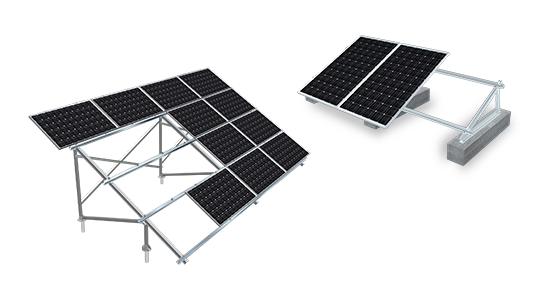Berkeley Lab report examines financial impacts of distributed PV on utilities
Analysts from the U.S. Department of Energy's Lawrence Berkeley National Laboratory (Berkeley Lab) have examined the potential impacts of distributed PV on electric utility profitability and rates.
The report, Financial Impacts of Net-Metered PV on Utilities and Ratepayers: A Scoping Study of Two Prototypical U.S. Utilities, shows that impacts can vary greatly depending upon the specific circumstances of the utility and may be reduced through a variety of regulatory and ratemaking measures.
The researchers point out that adoption of distributed PV by residential and commercial customers has expanded rapidly in recent years, driven in part by the prevalence of net metering. Although distributed PV generation currently represents roughly 0.2% of the nation's electricity supply, and no more than 1% to 2% in most states, widespread debates have surfaced about the financial impacts of distributed PV on utilities and their customers.
"This work is intended to fill a gap in those debates by providing some concrete information about the potential magnitude of the financial impacts, by identifying the key conditions under which they may become more or less severe, and by evaluating possible strategies for reducing their severity," says Berkeley Lab's Galen Barbose, one of the report's authors.
Berkeley Lab’s analysis was based on two prototypical utilities -- a vertically integrated utility in the southwest and a wires-only utility in the northeast -- and estimated the possible financial impacts of distributed PV on both utility shareholders and ratepayers.
At PV adoption levels equal to 2.5% of total utility retail sales, which is greater than levels that currently exist in all but one state, researchers found that distributed PV resulted in about a 4% reduction in shareholder earnings for each of the two utilities. The impacts on average retail electricity rates, however, were considerably smaller, with increases of 0.1% and 0.2%, respectively, according to the report.
"One important contribution of this work is to highlight the degree to which the impacts of distributed PV on utility shareholders and ratepayers can depend on particular details of the utility's operating and regulatory environment," adds Andrew Satchwell, a co-author of the report.
In considering a future in which distributed PV increases to reach 10% of total utility electricity sales -- which is much greater than current adoption rates -- the report estimates that shareholder earnings might be reduced by anywhere from 5% to 13% for the southwestern utility and by 6% to 41% for the northeastern utility. Those ranges reflect alternate assumptions about the utilities' underlying load growth, rate structure and other factors, as well as uncertainty about the degree to which distributed PV defers the need for utility capital investments in new generation, transmission and distribution infrastructure.
Berkeley Lab says a core purpose of the study was to evaluate measures that could be pursued by utilities and regulators to reduce the financial impacts of distributed PV. The report considered a large number of such measures, including changes to utility rate design and ratemaking processes, mechanisms that allow utilities to recoup revenues lost due to distributed PV or to earn profits on distributed PV, and a variety of other strategies.
The report shows that a number of these measures could restore utility profitability to levels similar to what would occur in the absence of distributed PV, or could offset rate increases associated with distributed PV, or both. However, as Andrew Mills, another co-author of the report, explains, "The effectiveness of these measures often depends critically on how they're designed, and in many cases, they involve important tradeoffs -- either between utility ratepayers and shareholders or among competing policy objectives."
As such, the report does not offer specific recommendations, but rather seeks to highlight important issues for utilities and regulators to consider as they weigh issues surrounding distributed PV and net metering.


